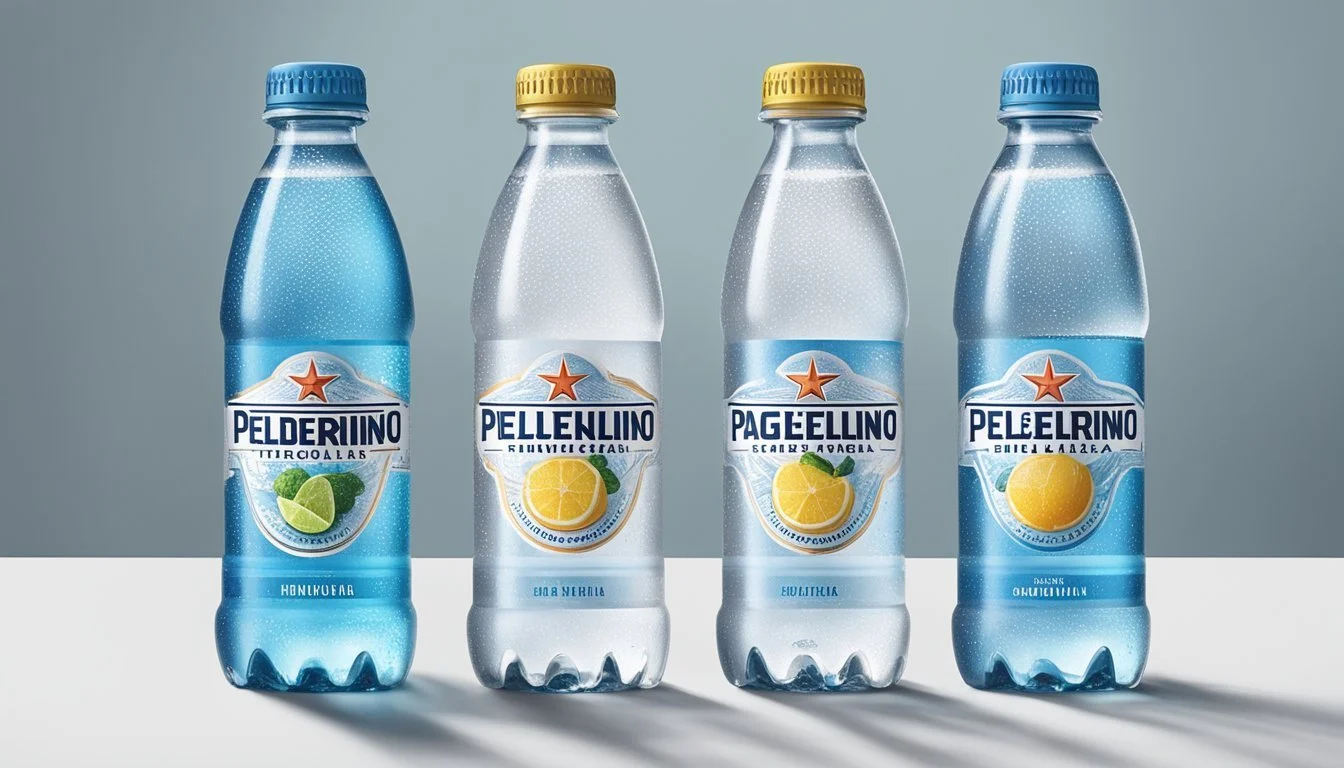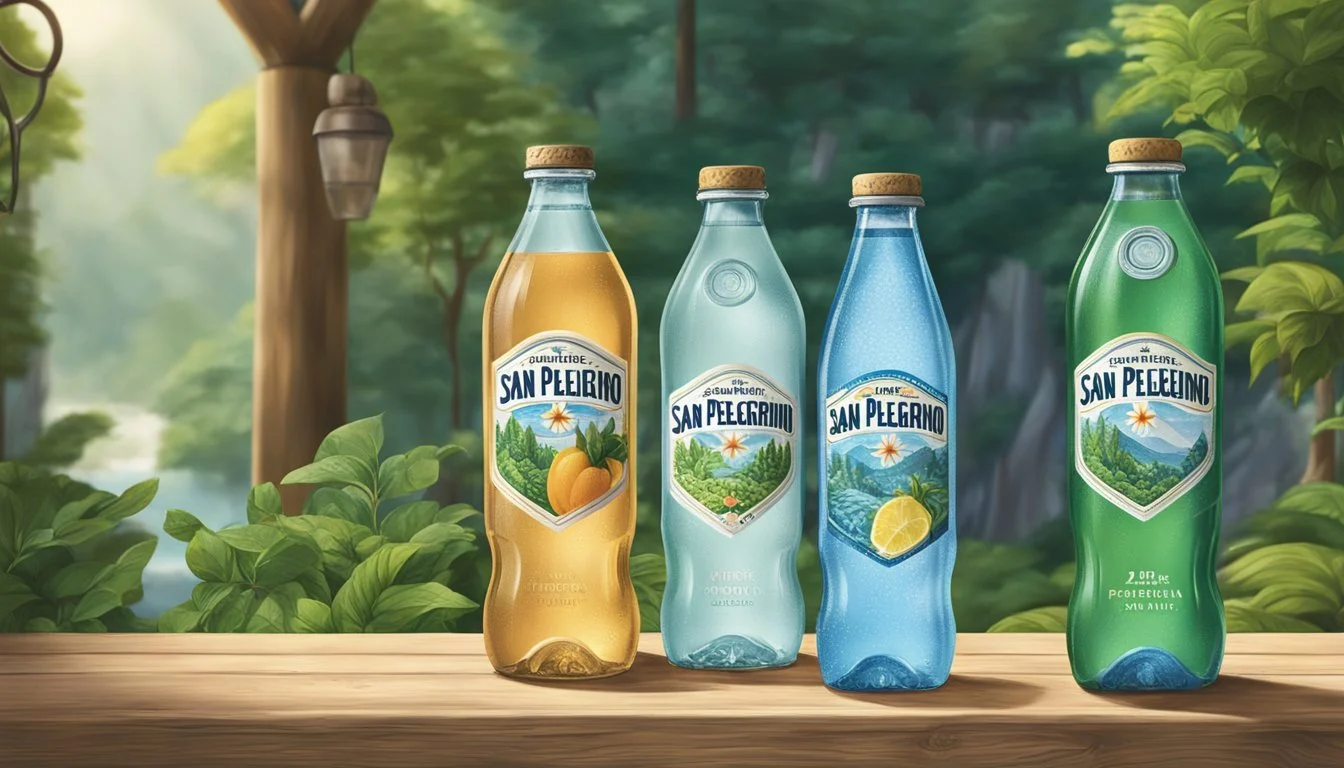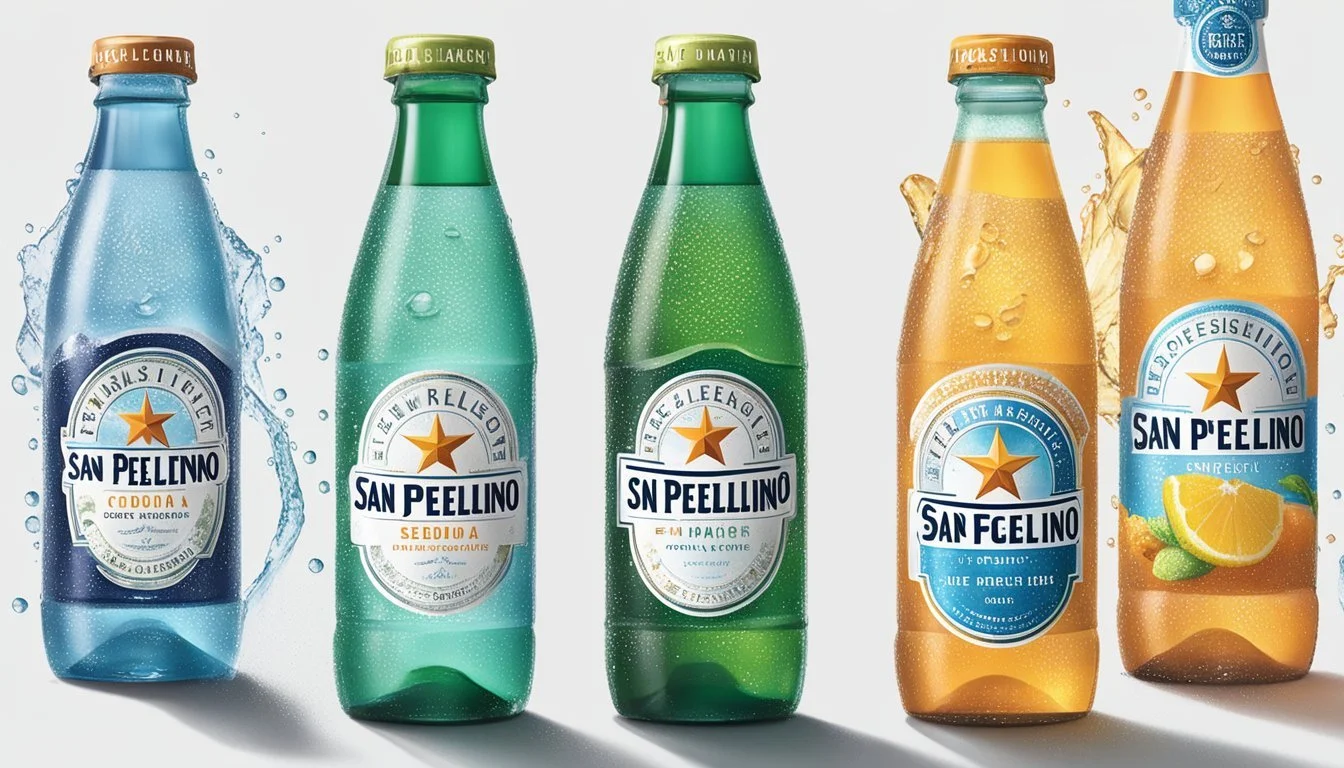San Pellegrino vs. Purely Sedona
Which Bottled Water is Better for You?
Choosing between San Pellegrino and Purely Sedona can be a daunting task for those who care about their bottled water. San Pellegrino, known for its sparkling mineral water with a slightly more acidic pH of 5.6, brings a distinct, refreshing fizz that many find appealing. Purely Sedona, on the other hand, prides itself on purity and local heritage, offering a clean, crisp taste that speaks to its commitment to quality.
For those who enjoy the lively sensation of carbonation, San Pellegrino's refined bubbles and unique mineral content can enhance any meal or occasion. Purely Sedona’s focus on delivering pure, high-quality still water makes it a favorite among those who prefer a smooth, uncarbonated drinking experience. These differences in texture and taste are critical considerations for consumers.
Moreover, the branding and marketing strategies of these two brands play a significant role in consumer preference. San Pellegrino is often associated with fine dining and high-end restaurants, making it a status symbol for some. Meanwhile, Purely Sedona emphasizes its local origins and purity, appealing to those who prioritize natural and authentic products.
Origins and Sources
Understanding the origins and sources of bottled water can provide insights into their unique qualities. San Pellegrino and Purely Sedona both draw from distinctive natural sources, contributing to their unique taste profiles and reputations.
San Pellegrino: The Source
San Pellegrino water originates in the Italian Alps, specifically from the town of San Pellegrino Terme. This area is renowned for its natural springs and mineral-rich waters.
Sourced from a natural spring, San Pellegrino water is known for its balanced mineral composition. The journey from rainwater or melted snow in the Alps through mineral-rich ground contributes to its unique taste.
The natural filtration process through the layers of dolomite, a type of limestone, enriches the water with minerals like calcium and magnesium. This process, which takes around 30 years, helps San Pellegrino maintain its distinct mineral profile and slight carbonation.
Purely Sedona: The Source
Purely Sedona water is sourced from the aquifer beneath Oak Creek Canyon in Arizona. This unique location provides the brand with high-quality spring water known for its purity.
Drawing from an aquifer, the water undergoes a natural filtration process through sediment and rock, which helps maintain its clean and refreshing taste. The aquifer's depth and geological characteristics play a significant role in the water's mineral content and overall quality.
The pristine environment of Oak Creek Canyon, with minimal industrial impact, ensures that Purely Sedona water remains pure and free from contaminants. This commitment to purity and local heritage is a key aspect of Purely Sedona's branding and appeal.
Physical and Chemical Profiles
Examining the physical and chemical attributes of San Pellegrino and Purely Sedona bottled waters reveals notable differences in their mineral compositions and carbonation processes.
Mineral Composition
San Pellegrino is renowned for its rich mineral profile. It contains significant levels of calcium, magnesium, and bicarbonate, making it a beneficial choice for mineral intake. The specific breakdown includes approximately 208 mg/L of calcium, 52 mg/L of magnesium, and 244 mg/L of bicarbonate.
Purely Sedona, sourced from the artesian springs of Oak Creek Canyon in Arizona, is naturally filtered through canyon rocks, enriching it with a unique mineral composition. While it is also high in essential minerals like calcium and magnesium, its specific mineral content may vary more than that of San Pellegrino.
Carbonation Process
San Pellegrino is a sparkling mineral water that undergoes a natural carbonation process. The water is infused with carbon dioxide from a natural underground source, creating its distinctive effervescence and giving it a crisp, refreshing taste.
Purely Sedona, though primarily known as a still water, also offers a sparkling water option. The carbonation of Purely Sedona is typically a mechanical process, where CO2 is added to the water post-extraction to create bubbles, differing from San Pellegrino's naturally carbonated production method.
The differences in carbonation processes contribute to the unique sensory experiences of these waters.
Taste and Palate Experience
When comparing San Pellegrino and Purely Sedona, two key aspects stand out: flavor profile and the texture of their carbonation. Each brand offers a unique experience to the palate, making them suitable for different tastes and uses.
Flavor Comparison
San Pellegrino offers a complex flavor profile characterized by its crispness and slight bitterness. It hails from a natural spring in the Italian Alps and contains beneficial minerals such as potassium, calcium, sodium, and magnesium. These minerals contribute to its distinctive, slightly metallic taste that pairs well with various foods, especially rich dishes and robust wines.
Purely Sedona, on the other hand, features a smooth and neutral flavor that makes it an excellent palate cleanser. It lacks the mineralized sharpness of San Pellegrino, offering instead a clean and unobtrusive taste. This neutrality makes Purely Sedona ideal for those who prefer a subtler drinking experience or need a versatile water option for pairing with a wide array of wines and foods.
Carbonation and Texture
San Pellegrino is known for its effervescence and fine bubbles. The carbonation process adds a lively sensation that enhances the overall drinking experience. The bubbles create a light, velvety texture on the palate, making it refreshing and invigorating. This effervescent quality makes it a popular choice for social occasions and meals.
Purely Sedona distinguishes itself with a smoother texture and softer carbonation. The gentle effervescence provides a mild, pleasant mouthfeel without overwhelming the senses. This makes Purely Sedona a comfortable option for continuous hydration and a fine complement to delicate dishes, where a subtle texture is preferred.
Both brands cater to different preferences, enabling consumers to choose based on their specific taste and sensory needs.
Health and Nutrition
San Pellegrino and Purely Sedona both offer distinct health benefits, primarily influenced by their mineral content and hydration properties. Understanding these aspects can guide consumers in choosing the right bottled water for their health needs.
Hydration and Mineral Benefits
Proper hydration is essential for bodily functions. San Pellegrino, with its balanced mineral content, not only hydrates but also supports bone health and muscle function due to its calcium and magnesium levels. Calcium strengthens bones, while magnesium aids in muscle contractions and relaxation.
Purely Sedona, known for its purity, offers fewer minerals but excels in maintaining pH balance and electrolyte levels. This feature makes it a good choice for those looking to stabilize body pH and electrolyte balance without added minerals.
Both waters contribute to hydration but in slightly different ways due to their mineral compositions, enhancing overall wellness.
Mineral Content and Health Benefits
San Pellegrino stands out for its mineral content. It contains calcium (166 mg/L) and magnesium (49 mg/L), both vital for bone health, muscle function, and digestion. These minerals contribute to its alkalinity, potentially benefiting those needing an alkaline diet for health reasons.
Purely Sedona focuses on purity and has a neutral pH level close to natural spring water. Its lower mineral content means fewer added benefits, but it avoids excessive mineral intake. This makes it suitable for those who prefer a milder taste and minimal mineral ingestion.
The choice boils down to one's health needs—mineral replenishment with San Pellegrino or maintaining purity with Purely Sedona.
Economic and Environmental Considerations
Examining the economic and environmental aspects of San Pellegrino and Purely Sedona can help consumers make informed choices. Key points include price differences and the environmental impact of packaging and production.
Price and Affordability
San Pellegrino generally falls on the higher end of the price spectrum for premium bottled waters. A single bottle can range from $2.50 to $4.00. This aligns with its branding and presence in fine dining restaurants and other high-end venues.
Purely Sedona offers a more budget-friendly option, with prices ranging from $1.50 to $3.00 per bottle. This makes it accessible to a broader range of consumers and positions it as a viable daily consumption choice without the premium tag associated with brands like San Pellegrino, Acqua Panna, or Perrier.
Both brands cater to different segments of the market. While San Pellegrino appeals to those looking for a luxury experience, Purely Sedona provides an affordable yet premium alternative for cost-conscious consumers.
Sustainability and Impact
Environmental considerations are crucial when comparing bottled water brands. San Pellegrino, like many premium bottled waters, faces scrutiny for its environmental practices. Although the brand has made strides in eco-friendly packaging, including the use of recyclable materials, the overall environmental impact of transporting and producing premium water remains significant.
Purely Sedona places an emphasis on sustainability, often highlighting its use of eco-friendly packaging and efforts to reduce plastic waste. Being locally sourced, it also claims a lower carbon footprint compared to international brands like San Pellegrino and other imported waters such as Core Hydration or Topo Chico.
Consumers increasingly prioritize brands that demonstrate a commitment to sustainability. Therefore, while San Pellegrino's environmental initiatives are notable, Purely Sedona’s local production and eco-friendly measures can be compelling for the environmentally conscious.
Production and Quality
San Pellegrino and Purely Sedona both claim to offer high-quality bottled water, but their methods of filtration, purity, packaging, and safety reveal key differences.
Filtration and Purity
San Pellegrino sources its water from a natural spring in the Italian Alps. This still and sparkling water undergoes minimal filtration to preserve its natural minerals, such as potassium, calcium, sodium, and magnesium. Carbon dioxide is added to create the distinctive bubbles in their sparkling varieties, ensuring a balanced mineral content and refreshing taste.
Purely Sedona employs advanced filtration techniques, including reverse osmosis and distillation, to ensure the water remains free from impurities. The result is bottled water with high purity and a consistent taste. The presence of minerals in both still and sparkling versions is carefully controlled to meet the brand’s quality standards.
Packaging and Safety
San Pellegrino uses both glass and PET plastic bottles, with an emphasis on preserving the carbonation in sparkling water. The materials are selected to maintain water quality and safety during storage and transport. San Pellegrino also adheres to strict safety standards to ensure its bottled water remains uncontaminated and safe for consumption.
Purely Sedona prioritizes eco-friendly packaging solutions. Their bottles are made from recyclable materials, reflecting a commitment to sustainability. Safety is ensured through rigorous testing and adherence to industry standards. The brand’s sparkling water is noted for its slightly acidic nature, which is a consideration for consumers monitoring their acid intake.
By evaluating these aspects, consumers can make an informed decision on which brand better suits their preferences and priorities.
Cultural and Culinary Role
San Pellegrino and Purely Sedona each have distinct positions in the bottled water market, marked by their cultural significance and culinary roles.
The Role in Restaurants and Fine Dining
San Pellegrino, renowned for its sparkling mineral water, is often synonymous with fine dining. Its partnership with high-end restaurants elevates its status, making it a staple on luxury tables. From Michelin-starred venues to upscale bistros, San Pellegrino is frequently chosen to complement sophisticated cuisine.
Purely Sedona, known for its pure, locally-sourced water, appeals to establishments emphasizing local heritage and sustainability. While not as universally recognized as San Pellegrino, its branding aligns with the farm-to-table movement, making it a valued choice for eco-conscious dining venues.
Acqua Panna, another fine dining favorite, often accompanies San Pellegrino. Together, they form a duo frequently featured in upscale restaurants offering both still and sparkling options.
Consumer Preferences and Trends
Consumers' choices in bottled water are influenced by factors like taste, brand reputation, and marketing. San Pellegrino, with its long-standing reputation and strategic collaborations, enjoys loyalty from those seeking a premium dining experience. Its distinctive effervescence and mineral profile appeal to a broad audience.
Purely Sedona, though less known, is gaining traction among consumers valuing local and sustainable products. Its emphasis on purity and natural sourcing resonates with environmentally conscious buyers. In busy markets with growing emphasis on sustainability, Purely Sedona is carving out a niche for itself.
As competition in the bottled water industry intensifies, both brands leverage their unique attributes to attract and retain customers.
More About San Pellegrino
Acqua Panna vs San Pellegrino: Which Bottled Water is Better?
Boxed Water vs San Pellegrino: Which Bottled Water is Better?
Core Hydration vs San Pellegrino: Which Bottled Water is Better?
Ice Mountain vs San Pellegrino: Which Bottled Water is Better?
Icelandic Glacial vs San Pellegrino: Which Bottled Water is Better?
Just Water vs San Pellegrino: Which Bottled Water is Better?
Mountain Valley Spring Water vs San Pellegrino: Which Bottled Water is Better?
Nestle Pure Life vs San Pellegrino: Which Bottled Water is Better?
Poland Spring vs San Pellegrino: Which Bottled Water is Better?
San Pellegrino vs Alkaline88: Which Bottled Water is Better?
San Pellegrino vs Aqua Carpatica: Which Bottled Water is Better?
San Pellegrino vs Cascade Mountain: Which Bottled Water is Better?
San Pellegrino vs Castle Rock: Which Bottled Water is Better?
San Pellegrino vs CBD Living: Which Bottled Water is Better?
San Pellegrino vs Crystal Geyser: Which Bottled Water is Better?
San Pellegrino vs Crystal Lake: Which Bottled Water is Better?
San Pellegrino vs Essence pH10: Which Bottled Water is Better?
San Pellegrino vs Hawaii Volcanic: Which Bottled Water is Better?
San Pellegrino vs Hawaiian Springs: Which Bottled Water is Better?
San Pellegrino vs Kirkland Signature: Which Bottled Water is Better?
San Pellegrino vs Liquid Death: Which Bottled Water is Better?
San Pellegrino vs Open Water: Which Bottled Water is Better?
San Pellegrino vs Proud Source: Which Bottled Water is Better?
San Pellegrino vs Richard's Rainwater: Which Bottled Water is Better?
San Pellegrino vs Simple Truth: Which Bottled Water is Better?
San Pellegrino vs Smartwater: Which Bottled Water is Better?
San Pellegrino vs Solan de Cabras: Which Bottled Water is Better?
San Pellegrino vs Talking Rain AQA: Which Bottled Water is Better?
San Pellegrino vs Topo Chico: Which Bottled Water is Better?
San Pellegrino vs Weird Water: Which Bottled Water is Better?
San Pellegrino vs Whole Foods 365: Which Bottled Water is Better?
San Pellegrino vs Whole Foods Italian Still Mineral water: Which Bottled Water is Better?
San Pellegrino vs Zephyrhills: Which Bottled Water is Better?
More About Purely Sedona
Aqua Carpatica vs Purely Sedona: Which Bottled Water is Better?
Boxed Water vs Purely Sedona: Which Bottled Water is Better?
Castle Rock vs Purely Sedona: Which Bottled Water is Better?
Core Hydration vs Purely Sedona: Which Bottled Water is Better?
Hawaii Volcanic vs Purely Sedona: Which Bottled Water is Better?
Hawaiian Springs vs Purely Sedona: Which Bottled Water is Better?
Ice Mountain vs Purely Sedona: Which Bottled Water is Better?
Icelandic Glacial vs Purely Sedona: Which Bottled Water is Better?
Mountain Valley Spring Water vs Purely Sedona: Which Bottled Water is Better?
Nestle Pure Life vs Purely Sedona: Which Bottled Water is Better?
Poland Spring vs Purely Sedona: Which Bottled Water is Better?
Purely Sedona vs Cascade Mountain: Which Bottled Water is Better?
Purely Sedona vs Crystal Geyser: Which Bottled Water is Better?
Purely Sedona vs Crystal Lake: Which Bottled Water is Better?
Purely Sedona vs Essence pH10: Which Bottled Water is Better?
Purely Sedona vs Kirkland Signature: Which Bottled Water is Better?
Purely Sedona vs Liquid Death: Which Bottled Water is Better?
Purely Sedona vs Proud Source: Which Bottled Water is Better?
Purely Sedona vs Richard's Rainwater: Which Bottled Water is Better?
Purely Sedona vs Simple Truth: Which Bottled Water is Better?
Purely Sedona vs Talking Rain AQA: Which Bottled Water is Better?
Purely Sedona vs Weird Water: Which Bottled Water is Better?
Purely Sedona vs Whole Foods 365: Which Bottled Water is Better?
Purely Sedona vs Whole Foods Italian Still Mineral water: Which Bottled Water is Better?
Solan de Cabras vs Purely Sedona: Which Bottled Water is Better?
Zephyrhills vs Purely Sedona: Which Bottled Water is Better?









